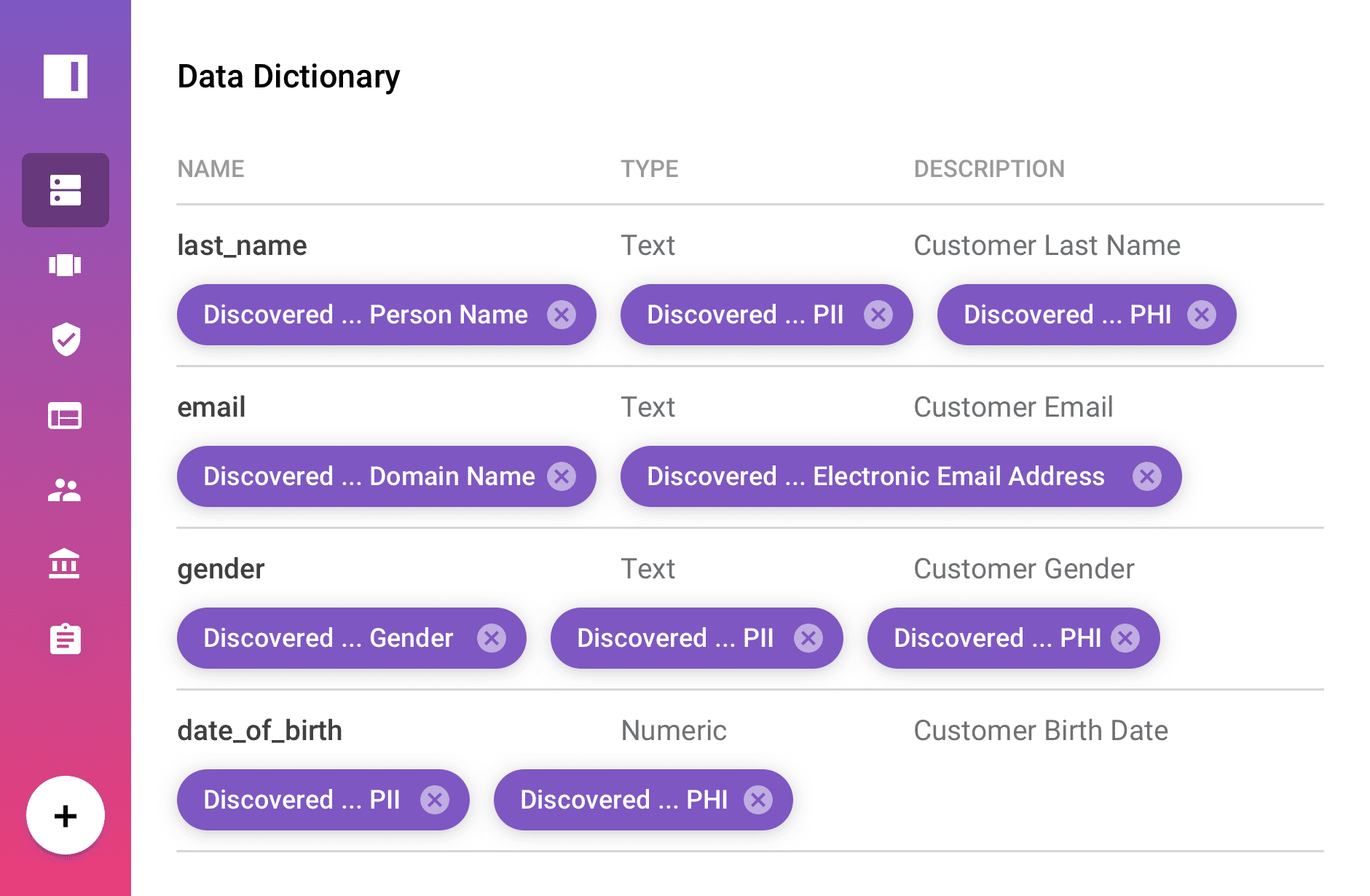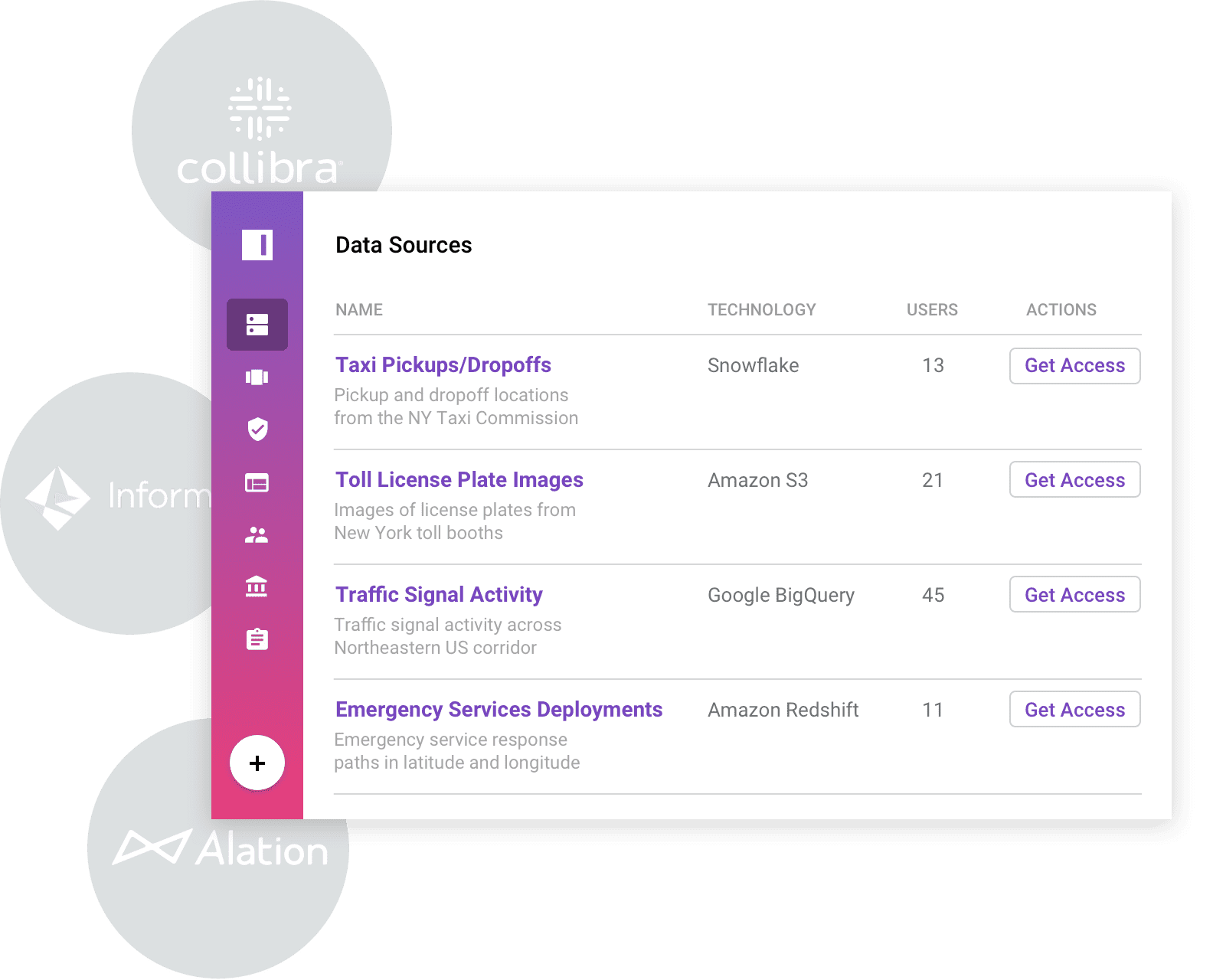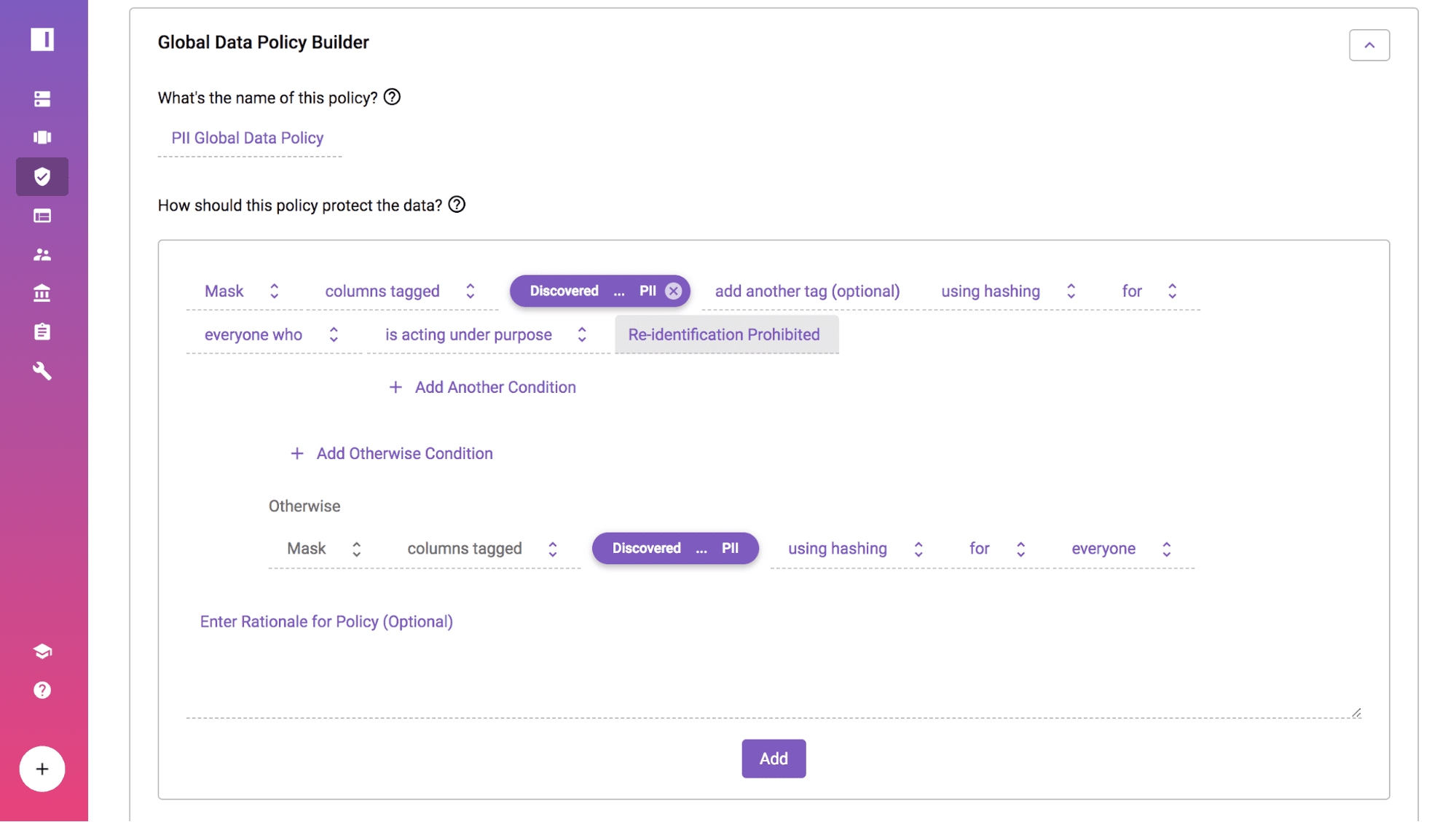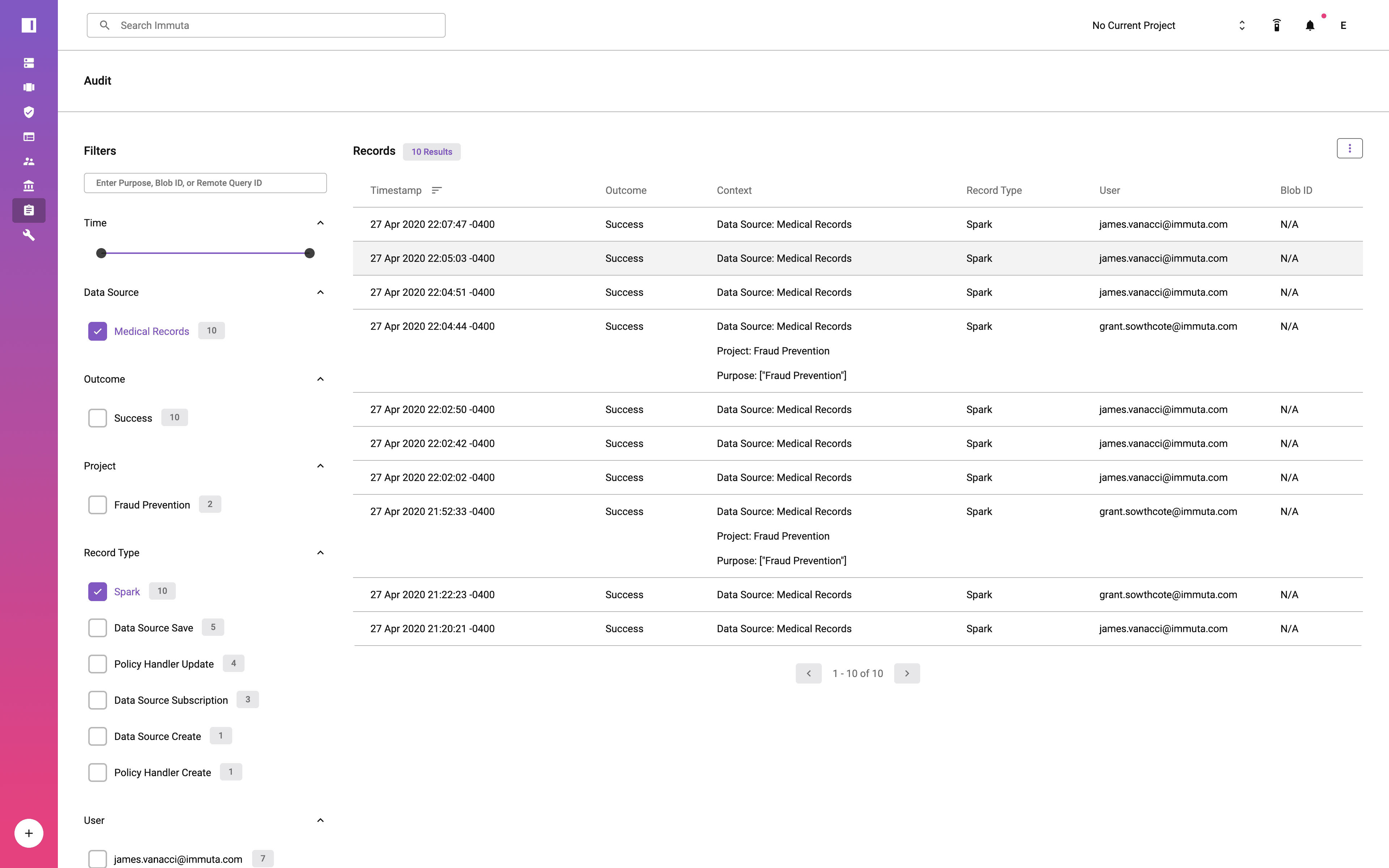
A data governance tool can help your organization automate data governance at scale, increase data utilization, and comply with data privacy regulations.
In this blog post, we’ll highlight five of the most important features to look for in a data governance tool.
What is a Data Governance Tool?
What is data governance? The term broadly refers to the set of policies and procedures implemented by an organization to control how its data is utilized, shared, and secured. Data access control policies cover a variety of topics, including, but not limited to:
- Data storage and operations
- Data integrity
- Data architecture
- Data security and privacy
- Data warehousing and business intelligence
- Metadata
In the past, data governance policies were enforced manually with time-consuming approval workflows that made it virtually impossible to efficiently manage data access at scale.
A data governance tool is a software application that allows data engineering and operations teams to create and automatically enforce data governance policies across the entire data ecosystem. Modern cloud-based organizations can deploy a data governance tool in the cloud and connect it to multiple cloud-based data sources. This allows the organization to effectively manage the availability, security, and integrity of all its cloud data from one place.
Automating data governance makes it easier for organizations to control data access at scale and increase their data utilization while staying compliant with data security and privacy regulations.
Access to the latest in data.
35,000 data professionals receive our monthly newsletter. Sign up for the latest insights, best practices, resources, and more.
Does Your Organization Need a Data Governance Tool?
If you think a data governance tool could benefit your organization, it’s time to start building the business case.
As a starting point, we can consider the most common challenges that organizations experience when it comes to managing, securing, and utilizing their data. If your business is facing similar obstacles, a data governance software tool could be the solution that gets you back on track.
Here’s how to tell if your organization might be ready for a data governance tool:
You’re Struggling with Regulatory Compliance
Regulatory compliance is a growing challenge for organizations that collect and store customer data. Some organizations operate in highly regulated industries (e.g. insurance, healthcare, and financial services) with industry-specific data privacy regulations. Companies that do business around the world may be subject to data privacy regulations in multiple jurisdictions.
If you’re struggling to manage your data in compliance with partner-specific, industry-specific, or general data privacy regulations, it’s probably time to adopt a more unified approach to data governance. A data governance tool allows you to automate data access controls and privacy requirements, maintain centralized oversight of compliance, and build an audit trail that shows compliance with data protection regulations.
Your Data Governance Policies are Inconsistent
Enterprise organizations today use tens or hundreds of cloud-based applications to run their daily operations. Some of those applications are owned by the IT department, while others are owned by managers in various business units. When data is generated by an application, the application owner becomes the de facto data owner: they control access to the application, so they’re able to control how the data is secured and accessed.
This often creates a situation where organizations have inconsistent data governance policies amongst applications or departments. You might have one business unit with very strict data policies and others with lax or poorly enforced policies. Meanwhile, some managers may be keen to share data, while others are less enthusiastic about collaboration.
A data governance tool helps ensure that all of your organizational data is protected by the same set of rules and policies, regardless of where it originates.
Your Data Sharing Workflows are Outdated
Manual data sharing processes can be time-consuming and create bottlenecks that slow the movement of data through your organization.
If your organization is using email chains to submit data requests, obtain approvals, communicate access provisions, etc., you’re probably experiencing long turnaround times for data requests that delay insights and reduce the impact of business analytics. A data governance tool can reduce your time-to-insights by streamlining the request process and making it easier and faster to connect your organization’s data resources with data consumers.
5 Things to Look For in a Data Governance Tool
1. Sensitive Data Discovery
What It Is:
Sensitive data discovery is a feature that automates the process of identifying, classifying, and tagging sensitive data from connected data sources. When a new data source is exposed to your data governance tool, sensitive data discovery allows you to automatically detect sensitive attributes and apply existing governance policies to that data.
Why You Need It:
When you’re generating huge volumes of data every day, it becomes time-consuming and eventually cost-prohibitive to manually identify, classify, and tag sensitive data attributes from a growing number of sources. Sensitive data discovery automates this process, allowing your organization to accelerate the data life cycle and reliably enforce data privacy rules at scale.

2. Data Catalog
What It Is:
A data catalog functions as a directory where data consumers can browse their organization’s available data, access authorized data sources using a self-service model, and request access to additional data for approved purposes.
Why You Need It:
Having a data catalog breaks down data silos within your organization and makes it easier for data consumers to request and access data when they need it. Connecting additional data sources to your catalog also enhances data visibility within your organization, opening the door for additional use cases and cross-departmental collaboration.

3. Data Access Control
What It Is:
Data access control is a core feature of every modern data governance tool. Access controls allow data engineers to regulate access to sensitive data by creating customized access policies and enforcing them across the entire data platform.
The most common approach to regulating data access is role-based access control (RBAC), a system in which data access permissions are dependent on the user’s assigned role in the system. However, with organizations adopting multiple cloud data platforms and scaling data consumers, RBAC is becoming more complex and difficult to manage efficiently. Attribute-based access control (ABAC) is an emerging paradigm that offers more flexibility and reduces security risks when provisioning access to protected data by dynamically granting data access based on specific user and data attributes.
Why You Need It:
Data access controls are absolutely necessary when it comes to protecting your organization’s sensitive data. With the right data governance tool, you’ll be able to restrict data access at query time based on user attributes like security clearance level or location. You’ll also be better able to comply with data privacy laws like the GDPR by ensuring that sensitive data is only used for clear and authorized purposes.
Perhaps most notably, as organizations move toward diverse cloud data ecosystems, is that ABAC allows you to apply the same access controls to sensitive data from all of your connected sources, enabling a consistent data governance framework across your organization’s entire IT infrastructure.

4. Dynamic Data Masking
What It Is:
Dynamic data masking is a feature that automates the process of removing, anonymizing, or otherwise masking sensitive data values from users who aren’t authorized to access it.
Why You Need It:
What happens when a team within your organizations needs access to some data for a legitimate purpose, but that data exists in a table with other sensitive data that they shouldn’t be accessing?
In the past, someone would have to clean the data by manually removing those restricted values before the team could be granted access – a tedious process that slows down the data life cycle and negatively impacts data utilization. With dynamic data masking capabilities, like differential privacy and k-anonymization, data engineers can build policies that automatically hide sensitive data from users who don’t need to see it.

5. Auditing & Reporting
What It Is:
Data teams need a way to gather real-time data insights on data use to ensure its secure and compliant use. Data governance tools with auditing and reporting capabilities help you keep track of who is accessing which data, when they’re accessing it, and how it’s being used. The best data governance tools will automatically generate data audit reports that you can review to maximize your visibility of data utilization throughout your business.
Why You Need It:
If your organization is a potential target for a data security and privacy audit from a private or government regulator, establishing an audit trail will expedite the process and help you demonstrate your compliance status. You’ll also be able to effectively monitor how data consumers are utilizing data within your organization, identify underutilized data assets, and understand how your policy changes impact data utilization over time.

Choosing a Data Governance Tool
Immuta delivers the capabilities you need to establish and enforce a data governance framework that supports data integrity, accessibility, utilization, and regulatory compliance.
With Immuta, you’ll benefit from features like:
Ready to see how Immuta’s cloud data access control platform can help you take control of your data?









